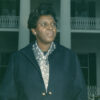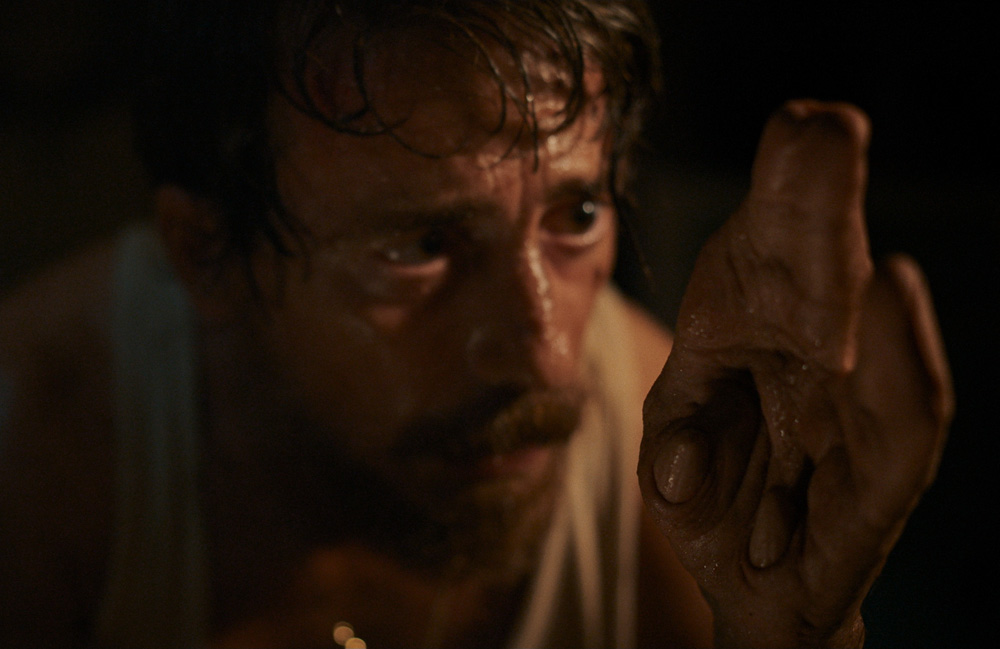“Raising a child in the mountains is not easy,” Don Francisco (Pedro Casablanc) tells Eladio (Victor Clavijo) in “The Wait,” warning him again resettling in the Andalusian mounts in Spain, though he could use the help on his ranch where he hasn’t dared stepped foot since his wife died. Eladio has a 10-year-old son to think of, weighing whether the concern that the boy will have few friends in the countryside and adapt to a rougher way of life will be worth it when the living it will provide will keep the family afloat as its patriarch sets up wild game hunts on the property, a job known as the secretary, making sure that those who come to visit with guns are spread out enough that they don’t end up firing at each other.
You know what decision Eladio will make and that it likely won’t turn out well when F. Javier Gutierrez’s third feature begins, but whereas Eladio finds peril out in the outskirts of Spain, the writer/director is rejuvenated by his return there after first turning heads in 2008 with the apocalyptic “Before the Fall,” in which he first had “The Wait” star Clavijo facing impossible choices upon learning that he likely only had three days before a meteor touched down. A director who clearly finds the way people respond to a crisis fascinating, he encountered one of his own when his debut landed him a coveted job on the 2017 reboot “Rings,” but it was considered a disappointment for all involved, and Gutierrez began thinking about what he found so fulfilling about filmmaking before, ultimately leading him back to the same territory in both a literal and physical respect as his debut.
“That movie was an unlikely success. Nobody wanted to put it out,” Gutierrez recalled recently. “It worked out and got a lot of love, like a cult following. And I wanted to do this movie for them somehow, so it’s part of that universe. I brought part of the crew from the original movie — it was really hard to find and put them together, but I think you can tell that this is a movie that is honest and you do it with the heart.”
Such things aren’t usually said about grizzly thrillers, but the warmth that “The Wait” was made with isn’t limited to the intense sun that beats down on Eladio and his family, their love for each other evident when it’s tested by a tragedy. The secretary isn’t speaking in hyperbole when he eventually has to concede “this job is all I have” as forces converge to rip everything away from him and there’s a craftsmanship in “The Wait” that makes it feel as if Gutierrez and his crew feel the same, wringing horror from a father’s desire to provide for his family when he’s threatened with losing everything else in the process as he stumbles into the discovery that he may not know everything about the land he’s been hired to know every inch of.
After frightening up audiences at genre festivals stretching from Fantastic Fest in Austin to Sitges in Gutierrez’s native Spain, “The Wait” is now hitting people where they live as the director intended after being released on VOD in the U.S. and Gutierrez spoke about reconnecting with his roots and the ties between his latest film and his first international breakthrough, as well as the demands he made of his chameleonic star Clavijo and the ones he put on himself in creating the tense film.
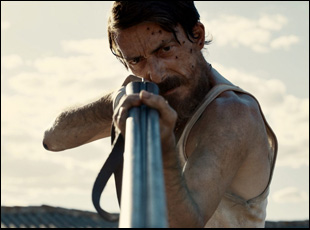
Yeah, “Before the Fall” and this come from my childhood. I went to visit my grandfather a lot who used to live in a village in the Sierra Morena in the south of Spain. In “Before the Fall,” I paid more attention to the people that live around the village, working, and in [“The Wait”], I put the focus on these people who used to live in the hunting states around [the village]. As a kid, I’d seen the people coming with hunting [rifles] and it was scary because it was very brutal, so that I wanted to reflect that kind of dark part of our culture that was in the mountains in the ’70s. I wanted to go back to my childhood memories and make a second movie about that.
Did the land actually give shape to the story?
Everything is very hyper-realistic in the movie, like how it used to be in the ’70s and I was scouting for a long time for this movie because I obviously I couldn’t shoot it in the area that I grew up with. It’s pretty far and it’s surrounded by mountains, so I had to find something similar around Seville. It was like a full-on scout of three months looking for the perfect mountain and for the perfect little corner. I think you can tell that it’s very, very real in the movie. I managed to find a couple of lands that we got the okay to shoot on and I could work with the topography. For example, I found a house with this lake, which is very unique, and some of the locations we didn’t touch because I found them there scouting.
Something that’s quite palpable in the film is the heat. Was the sun really beating down on you during the shoot?
Yeah, it’s part of the culture that we have in the south and it’s mostly it’s part of my memories. I would always visit my family in the summer, so I wanted to show that in the movie and it’s relentless. It takes over, so I was very, very focused on making that actually part of the storytelling. You can tell that there’s always sweat in the movie. There’s always dust and I worked on having the dust visible all the time. I was obsessive with those details and if something was not right on the frame, I’d stop it to make sure that we have the drop of sweat or the dust or the elements that evoke that heat.
Poor Victor, you’ve put this guy through hell twice. Was he game to come back when both this and “Before the Fall” must’ve been pretty punishing roles?
Yeah, it’s a good question. [laughs] “Before the Fall” was very, very hard to make, but we’re very good friends and through the years I would tell him, “I’m going to go back to Spain just so we can do something together again. We have to.” After finishing “Rings,” I said, “Okay, now is the moment for me to do something more personal, something that I can have full creative control and do something more unique.” And then I called Victor and I remember the phone call was very funny. I said, “Look, Victor, I have a project that I want to do with you this summer and just so you know, it’s going to be rough. It’s going to be dirty. It’s going to be very intense.” And he said, “Oh, no, it cannot be worse than before.” Then he during the shoot, he said “Well, you were not lying. This is worse than before. There was so much dirty and tougher and extreme.” [laughs] so it was pretty intense.
Is it true you could prepare him a bit by setting him up with a landowner like the one his character works for in the film?
Yeah, Victor is not from the countryside and a very urban person and I wanted him to go to this deeper level so you cannot recognize him from the character he played in “Before the Fall.” I wanted to change his features and to change his way of thinking, so I invited him to stay for a week in on a hunting land, isolated [where] there were a couple of people taking care of him, but he was mostly alone and could experience the solitude and the isolation and the heat and the animals walking around you when you don’t know who or what is around and [he could get] all that feeling of paranoia. It also makes you appreciate the nature. And we also talked about it making the character thinner so we can have [sharper] cheekbones because the people who work the land have to be like that. He had a strict diet and couldn’t cut his hair or his beard for a long time and I told him I’m going to have a lot of those [close-ups] of your fingers, your hands, the dirt, your face. I want everything to be real. I don’t have to have a fake beard. I want to have real hands that you can feel that they have been wasted by the ground, so it was a long process, but I think you can tell in the movie. He even changed the voice to a deeper level. He has amazing voice and that’s one of the trickiest things you can ask of an actor, not only the accent that he had to change to to portray like this caretaker from the South of Spain, but the deeper [register]. I wanted him to be a guy who doesn’t really speak much. Everything is very solemn about the way he communicates.
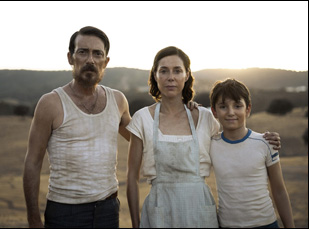
Yeah, I told him “We’re going to spend around 40 minutes of the movie with you alone and there’s not going to be dialogue. It’s going to be pretty much you and the camera and I’m going to make it look interesting. I’m going to be very close to you,” and when he read this, he told me “I’m a big part of the movie and that’s a challenge.” But he’s a very brave actor and very generous and he gives you everything. And that’s the complicity we both have because we know each other. We’re friends. I can push him to the limits. He trusts me 100 percent and he gives me 200 percent in front of the camera, so I think that chemistry you can see in the movie because it’s hard for an actor to be alone and going to dark places as an actor. For the whole period of the shooting, that’s pretty, pretty hard, but the result on screen is very, very unique.
He’s very expressive without saying much and you mentioned earlier the close-ups – was the visual language something you could design specifically with him in mind?
Yeah, it’s very physical movie and I pay a lot of attention to the faces. If you see all the characters that he’s surrounded by in the movie, even the ones that appear in by the end, all of them have been carefully picked because I love to get close with a camera and on this movie, I had like inspiration a little bit from some of the paintings of [Francisco de] Zurbarán, a great Spanish painter, and I wanted that expression that is even more obvious because of the sweat and the shine and the shadows, so it’s part of the composition of the whole movie. When I was working with the art department on this movie, I said, “I want to have the light and tones of Zurbarán, Caravaggio and the expression of El Greco in their faces because I am going to get very close. And my DP, who was the DP of “Before the Fall” knows me very well and did a great job. We worked together on the color palette and we got to that point that it’s pretty powerful, even if there is no dialogue.
You clearly have so much control over the frame, but at the same time, when you’re out in the wild like this, was there anything that came as a surprise that made it into the film and you really like about it now?
Yeah, little things because we work with a lot of animals and they surprise you a lot. Like the birds, or we have a boar and that took forever to shoot because you cannot direct a boar. It’s not possible. So it was very interesting to do those sequences and it actually stole all the time for the shooting, but it was worth it because the reactions are very real. When the boar gets scared and then runs, all those things are for real. But I have a lot of material because sometimes they don’t get scared. They just lie down and they are relaxed. [laughs] But we have a snake, too and some parts are like we are doing a National Geographic documentary because you put the camera [down], you frame everything and you hope that it happens and the animal just does the thing.
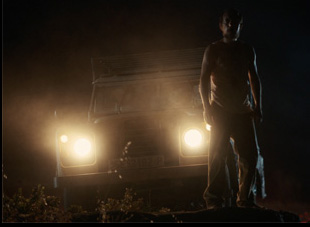
It’s super exciting because people connect a lot with in Spain because it has a lot of references to our history, but in America, I’m getting really good feedback when people enjoy it not as much because of the Spanish cultural references, but because of the connection with the spaghetti westerns of Sergio Leone that I grew up with and the journey of the main character is pretty dark and very human [like those films]. Some people even connect with the biblical references that are in the movie about the Old Testament and the expulsion from the Garden of Eden. Those are things that are universal and what excites me personally at a different level is that as a movie, it’s a bit out of the trend right now and I made it like that on purpose.
It’s called “The Wait” not only [because it’s thematically appropriate], but I remember the times that we were watching movies and we weren’t yet used to the streaming speed. We were taking time and enjoying and entering the world of the movie. I was missing that, and with this, I wanted to go back to a movie where you have to wait, you have to turn off your phone and enjoy the experience around you and give the give the movie time. I could’ve done something fast-paced. I know how to do that. But I didn’t want to. I wanted to go back to the roots of cinema and to the origin stories from the ‘60s and ’70s and some people may not have the patience, but I think people that love movies are going to appreciate that for a change. It’s refreshing because we’re not used to that anymore.
“The Wait” will be available as of October 4th on digital and VOD, including AppleTV.



